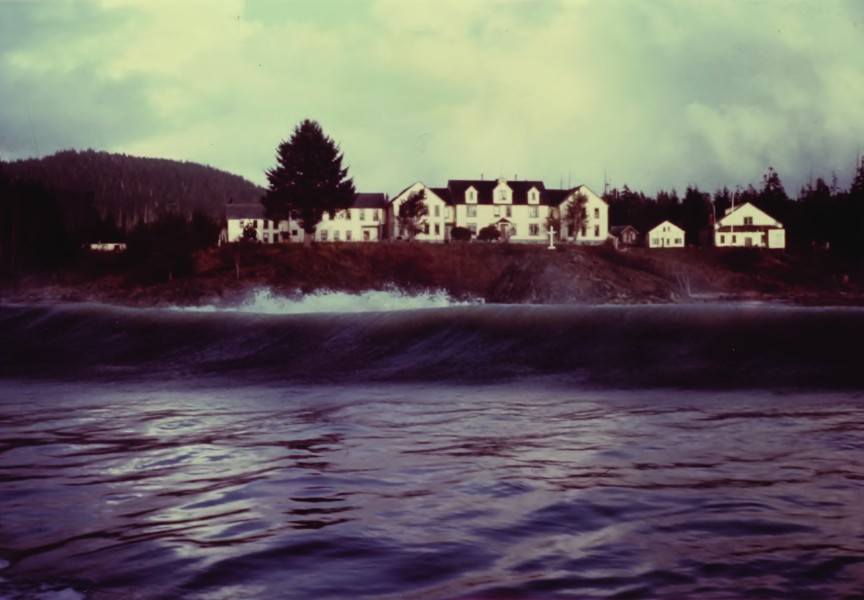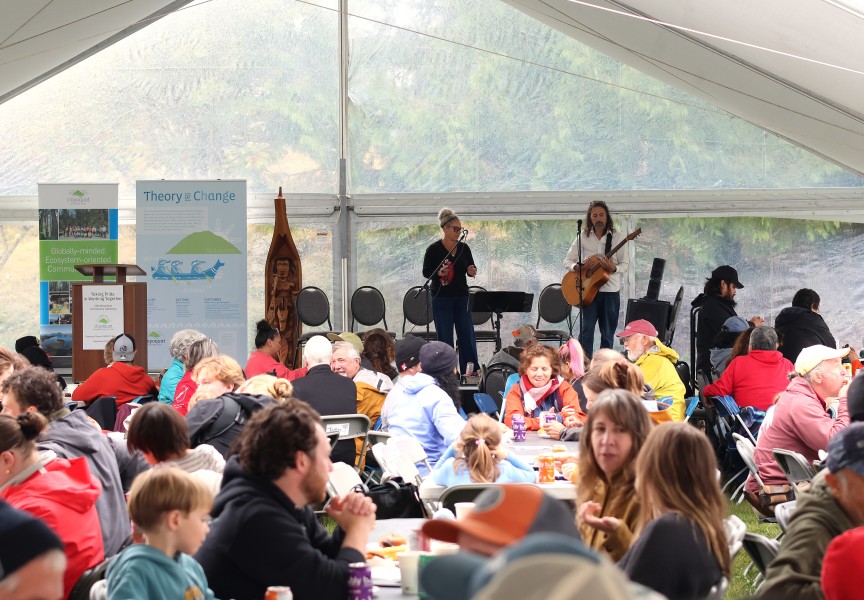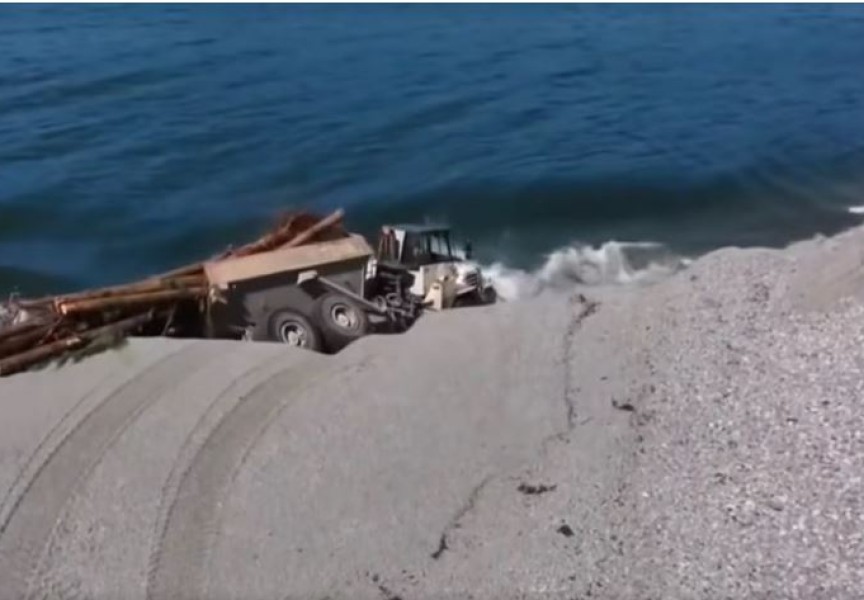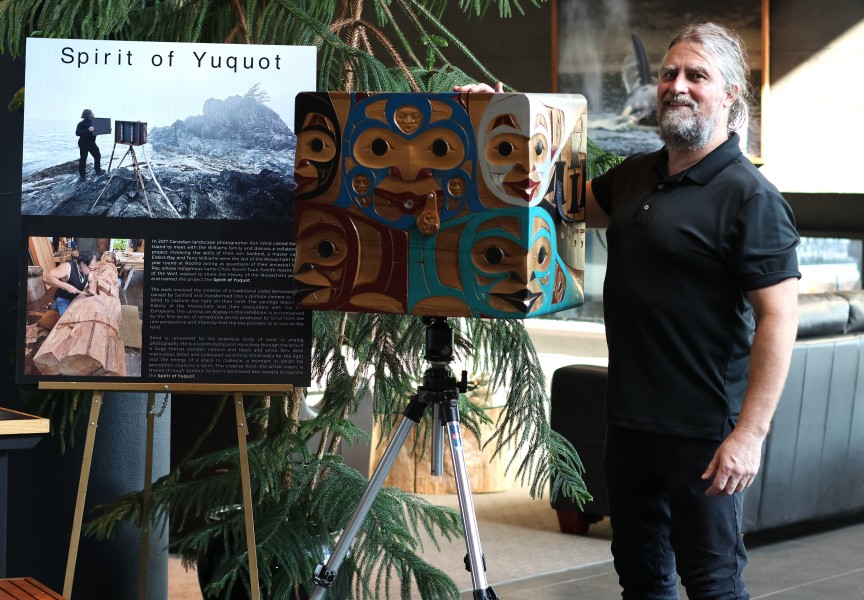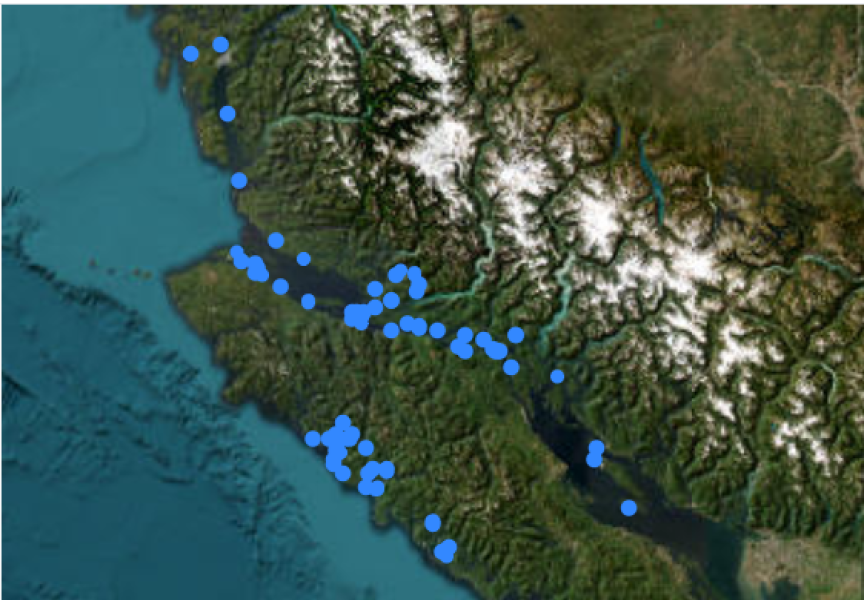When elder Julia Lucas learned that the grandchildren in her House had been taken away to residential school, she stood up and stole them back. Resistance to offensive government policy has been a part of the uncomfortable relationship between first peoples and Canada’s government for many years on the West Coast.
Lucas was taking part in a workshop held at Hupacasath House of Gathering on Feb. 4 which included 29 representatives of Fisheries and Oceans Canada, the Nuu-chah-nulth fisheries team and other invited Nuu-chah-nulth-aht.
The day’s activities were designed by John Rampanen. He tweaked his Na-naniiqsu Ha-huu-pa (teachings of the grandparents) cultural workshop to be more fisheries specific for the occasion.
The workshop endeavors to demonstrate a little about how Nuu-chah-nulth lived and worked together before contact with Europeans and what occurred to this lifestyle over 250 years of living with mumulthee (non-native) society. The day ended with a discussion on how to proceed from the point we have reached today.
See photos at: http://www.hashilthsa.com/gallery/fisheries-and-oceans-take-training-history-nuu-chah-nulth-build-relationship
The event was hosted by the Council of Ha’wiih Implementation Committee. The Council of Ha’wiih meets with senior DFO staff every three to four months to discuss fisheries issues of concern to the Nations.
As people entered the House of Gathering they were appointed to one of four ‘houses’ within: The whalers, the harvesters, the canoe carvers and the house of spirituality. Once in their houses, people were assigned roles.
In the Whaling House, for example, one person was assigned the role of Tyee Ha’wilth or head chief. It was explained that the Tyee owned everything in the territory and it was his responsibility that his people and his territory remained healthy.
In the Harvester House the fishers were worried. Their streams were not producing this year and they feared they would not have enough fish to put up for the winter months to feed their community. Their Tyee Ha’wilth went to the Tyee Ha’wilth of the whaling house to ask permission to fish in his territory. After the harvest, the group brought the Tyee a tribute, or a share of what had been harvested. This tribute was then distributed to the people of the tyee’s house and to the other houses in the room.
The activity was no accident. Nuu-chah-nulth nations have returned this protocol to official practise in recent years, using it when one nation’s salmon systems, for example, have been depleted or damaged by industrial practices. Fisheries and Oceans has been reluctant to honor these protocols, relying on adjacency restrictions that insist a nation fish in the waters near their lands, regardless of the health of the stocks there.
In the Canoe Carvers House the group discussed the many types of vessels the Nuu-chah-nulth used to travel and fish along the West Coast. In this house was Pat Charleson, a commercial fisherman from Hesquiaht with 65 years of experience. He had built 10 canoes in his time, and he talked about choosing the right log for a canoe, the tools he used and the time it took.
He said Nuu-chah-nulth used to be able to go to the forest to choose a tall cedar with no branches on it for a canoe. Today, Nuu-chah-nulth must get their logs from the logging companies in the territory or seek permissions from others to fall a tree.
As a demonstration of man’s ongoing reliance on the natural world, the students of Haahuupayak School ended the morning’s activities with their animal kingdom dance. It was then that mumulthee were introduced, and together indigenous and non-indigenous people thrived.
At contact in the late 1700s on the West Coast the relationship between the two peoples was mutually beneficial, said Rampanen, with trade in otter pelts, seals and other marine resources established. Over the years, however, Europeans began to exert control over indigenous peoples. Government policy limited reserve land. Laws limited access to the resources harvested from those lands and waters. Laws limited Native people from legally defending these losses. At every turn, First Nations were being cut off.
By 1868, the department of fisheries was established and within a dozen years the Native fisheries were being identified as a privilege, not a right. By the end of the 1800s, the Native commercial fishery, which once thrived, even decades after contact, was but a memory. Access to food fish was becoming more difficult with the federal government making it illegal to catch fish in traditional traps, weirs and drift nets. Fines were levied and fishing gear confiscated.
It’s all been about taking things away from Nuu-chah-nulth, said one participant. Up on a screen Rampanen went through a timeline of government initiatives that were purposely and deliberately meant to assimilate first people into non-Native society and curtail aboriginal economic potential.
When a nation contravened a policy, like fishing in an area not approved by government, Nuu-chah-nulth canoes were confiscated and burned. In the four houses, people were removed from the circle to sit against the wall as a demonstration of the loss.
If a ceremony was held contravening the potlatch ban, spiritual items like rattles and masks were removed from the houses and given to museums. The healers in the Spirituality House were removed and sat against the wall as the attack on indigenous culture continued.
When the small pox came, it removed the elders from the houses, and when the residential schools were opened, that removed the children.
Pretty soon there were only a couple of people left in the four houses; the capacity of nations left in shambles.
Except that, despite all of this, Native people found a way to hang on, and the tide began to shift again in the late 1960s, said Rampanen, with an understanding of social justice issues growing out of the racial tensions in the United States at the time.
After a sombre and humbling overview of the history of colonization, participants were returned to their houses to wrap up the day with a discussion on four questions.
1.) How do we come together to focus on healthy marine resources.
2.) How do we honor the cultural differences between Nations in our planning and negotiating around marine resources?
3.) How can we each as individuals work to build understanding and strong working relationships?
4.) Where do we go from here, considering the challenging historical relationship between Nuu-chah-nulth and Fisheries and Oceans? How do we work together for positive change?
NTC Vice President Ken Watts spoke to all assembled about the need to work together to rebuild Nuu-chah-nulth houses. The mood in the room changed from one of despair to hope as people who spent the day together, learning together, realized that they all had something to contribute to this rebuilding.



